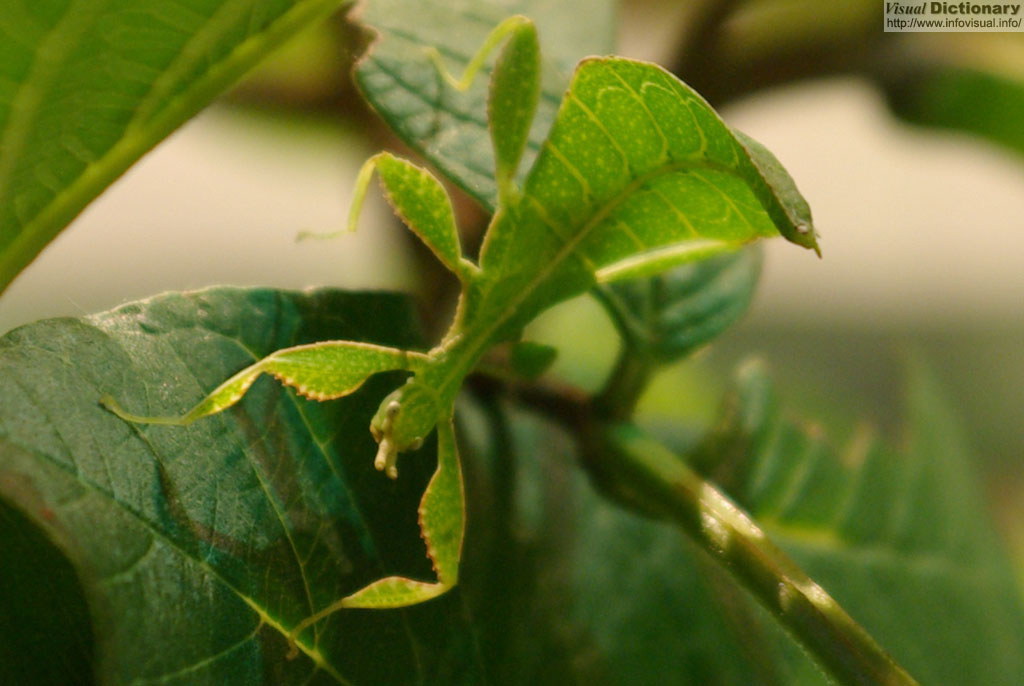Photo
Leaf insect

The family Phylliidae (often misspelled Phyllidae) contains the extant true leaf insects or walkingleaves, which include some of the most remarkable leaf mimics in the entire animal kingdom. They occur from South Asia through Southeast Asia to Australia. At present, there seems to be no consensus as to the preferred classification of this group; some sources treat Phylliidae as a much larger taxon, containing the members of what are presently considered to be several different families. It is used here in its most restricted sense. A 47 million year old fossil of Eophyllium messelensis, a prehistoric ancestor of Phylliidae, displays many of the same characteristics of modern leaf insects, indicating that this family has changed little over time.
Leaf insects use camouflage to take on the appearance of a leaf. They do this so accurately that predators often aren't able to distinguish them from real leaves. In some species the edge of the leaf insect's body even has the appearance of bite marks. To further confuse predators, when the leaf insect walks, it rocks back and forth, to mimic a real leaf being blown by the wind.
The scholar Antonio Pigafetta may have been the first to document the creature. Sailing with Ferdinand Magellan's circumnavigational expedition, he studied and chronicled the fauna on the island of Cimbonbon as the fleet hauled ashore for repairs. During this time he documented the Phyllium species with the following passage, in this island are also found certain trees, the leaves of which, when they fall, are animated, and walk. They are like the leaves of the mulberry tree, but not so long; they have the leaf stalk short and pointed, and near the leaf stalk they have on each side two feet. If they are touched they escape, but if crushed they do not give out blood. I kept one for nine days in a box. When I opened it the leaf went round the box. I believe they live upon air.